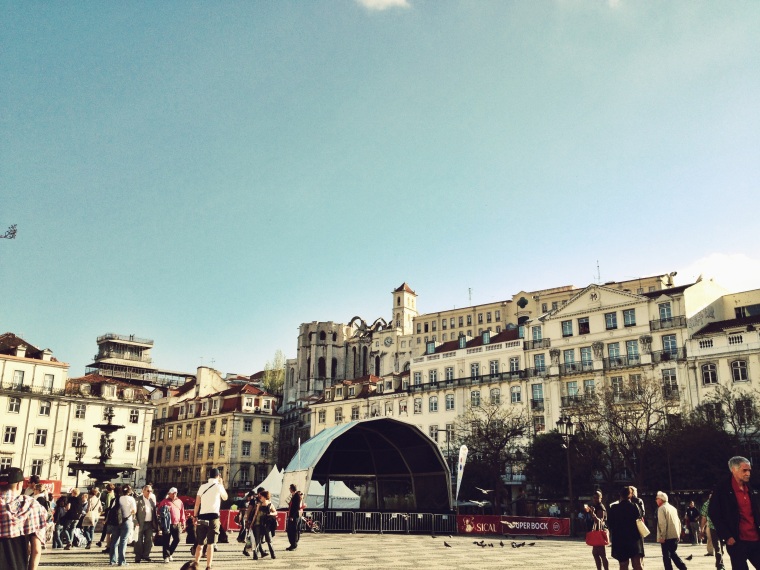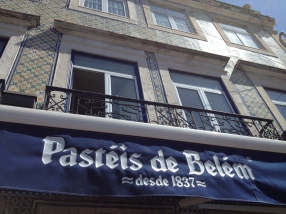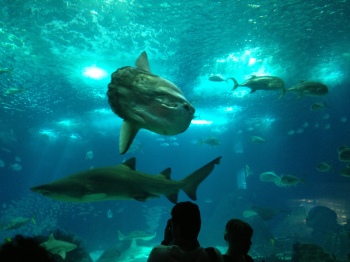
This is the first time I’ve visited Portugal, and I must say, I am pleasantly surprised by how interesting the capital is, although I still can’t decide if I like it or love it.
Like the coastal towns of their Spanish neighbors, Portuguese cuisine consists of mainly seafood – but simply boiled and served cold, so you really get to enjoy the pure sweetness of our crustacean friends. It is not unusual for tables at restaurants to be covered with wet tissues, plastic hammer and board, crab crackers and lobster forks. (for an amateur seafood eater, I would highly recommend having a few pieces of first-aid plasters close by, or a useful helpful husband who can peel prawns and crack open crab and lobster shells for you).
Is this a good time to confess that when we visited the Oceanarium on our last day, my stomach was growling so much when I saw all the lovely sea creatures swimming infront of us, all I could think of is yummy delicious seafood! (especially stingray grilled with sambal chilli and fish curry)
 I absolutely love Portugese architecture. The pretty cracked blue and white tiles that cover the walls of several old buildings remind me of the Peranakan shophouses in some parts of Singapore and Malacca in Malaysia, where many Portugese traders came to build their colonial settlements in the 1800s. I would love to live in a building that is painted fuschia pink or a happy egg yolk yellow.
I absolutely love Portugese architecture. The pretty cracked blue and white tiles that cover the walls of several old buildings remind me of the Peranakan shophouses in some parts of Singapore and Malacca in Malaysia, where many Portugese traders came to build their colonial settlements in the 1800s. I would love to live in a building that is painted fuschia pink or a happy egg yolk yellow.
Lisbon seems like a city of many contradictions. The historical district is a complex and compact maze of winding streets that goes up and down at every turn. It is definitely not a pram, wheelchair or high-heel-friendly city. We would have loved to take a ride on one of their iconic trams, which seem to be only about 5 metres long, but we know it’s impossible to squeeze a pram through the narrow entrance.
There are plenty of wide open spaces, especially along the marina area where you can enjoy long quiet walks, and the major tourist attractions are spread across the city. The many space-age looking museums and massive sculptures showcasing Portugal’s colorful history as a illustrious leader in sea trade are a sharp contrast to the skeletal frames of old clock towers, dilapidated warehouses and office buildings left in shambles, which must have been a bustling enclave of people coming in and out a long time ago.
For a global city which has 3 million residents (Lisbon is the 11th most populous city in the European Union),
it is also awfully quiet.
I’ve just returned from visiting Singapore and appreciate being able to walk around town without being jostled around. The streets are never packed with people or cars, even on a weekend. Our Portugese friend told us most residents hardly stay in the city on weekends, preferring to visit the many coastal towns nearby where they can lay on the sandy beaches all day long.
I was hoping that everywhere I go – left, right and centre, I would bump into the likes of Ronaldo Cristiano. He’s probably in the U.S shooting another Armani underwear ad. Portugese men tend to have a lot of facial hair and are generally quite short. It’s alot more likely to spot the likes of Hugo Almeidas. In general, the locals are a warm, easygoing and helpful bunch of people.
- Bairro Alto (Old town) and tram line












